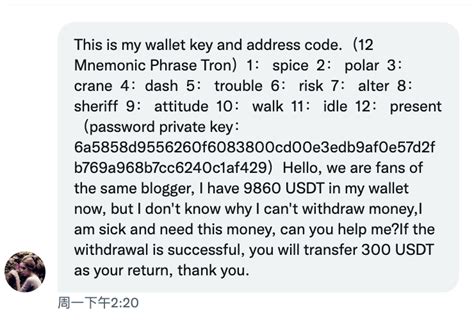Ethereum Multisig Wallets: Understanding the Key Requirements
When setting up an Ethereum multisig wallet, understanding the key requirements is crucial to ensuring the security and integrity of your digital assets. In this article, we will explore the concept of multisig wallets, focusing specifically on the requirement that one of the keys be known.
What is a Multisig Wallet?
A multisig wallet is a type of Ethereum wallet that allows multiple users to participate in transactions without compromising security. Each user is assigned a unique set of private keys, and once a transaction is signed, all participants must agree on the same signatures to validate the transaction.
Key Requirements for Multisig Wallets
To create a multisig wallet with specific requirements, you need to understand the following key concepts:
- Signers: Each user of your wallet is a signer, meaning they have a private key and participate in signing transactions.
- Sig Operators: Signers can act as signing operators, responsible for verifying and validating signatures on behalf of other users.
- Multisig Threshold: The multisig threshold determines how many signers are required to validate a transaction.
- Public Keys: Public keys represent ownership of Ethereum resources and are used to identify the signer.
Special Requirements: Single Key, Multiple Signatures
Let’s now look at the specific requirements for a single key, which is specifically needed for signing transactions. In this scenario:
- A user with a given key can sign transactions without verifying all other signatures.
- All other signers must agree on the same signatures to validate the transaction.
Example: 2-OF-3 Multisig Wallet

To illustrate this concept, let’s look at an example of a 2-of-3 multisig wallet. In this scenario:
- The first signer (S1) is required to sign transactions.
- All other signers (S2 and S3) must agree on the same signatures to validate the transaction.
Signing transactions with a single key
Here is an example of how you can create a multisig wallet with a single key that requires specific participation:
Key: K1
Signers: S1, S2, S3
Sig operators: S4 (optional)
Multisig threshold: 2
Transaction:
Input: ETH
Output: ETH (with certain conditions)
S1 signs a transaction with key K1.
S2 and S3 agree on the same signature set to validate the transaction.
S4 (optional) can verify the signatures, but is not required.
In this example, only signer S1 requires a specific key (K1), while all other signers must agree on the same signature set. This shows how you can create a multisig wallet with specific requirements using Ethereum's multisig features.
Conclusion
When configuring an Ethereum multisig wallet, understanding the key requirements is essential to ensure security and integrity. By understanding concepts such as signers, sig operators, and public keys associated with multisig wallets, you can create custom wallet designs that meet specific needs. For example, if one signer has a specific key (K1), multiple signers must agree on the same set of signatures to validate transactions.
To build on this concept, consider exploring Ethereum’s multisig features in more detail:
- 2/3 Multisig Wallets: Learn how to create 2/3 or 3/4 multisig wallets with specific requirements.
- Sig Operators: Learn more about signature operators and their roles in validating signatures on behalf of other signers.
- Multisig Thresholds: Explore different multisig threshold options, including 1-of-N and N-of-K configurations.
